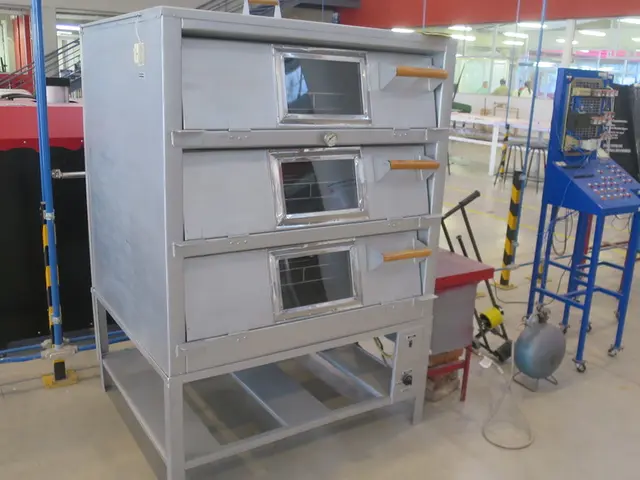Resuming debt collection on delinquent student loans: Implications for affected borrowers
In a surprising turn of events, the Department of Education begins to collect on student loans in default from Monday, potentially affecting millions of borrowers.
This action comes as the Trump administration continues its efforts to dismantle the Education Department and reverse previous policies, including those concerning student loan forgiveness.
Overdue Collections Loom for More than 5 Million BorrowersThe revived collection process is expected to impact more than 5 million borrowers currently in default, a number that might increase in the near future with approximately 4 million additional borrowers in "late-stage delinquency" (after 90 days without payment) [1].
Here's a breakdown of what this could mean for borrowers:
The Nitty-Gritty of Default
Federal student loans enter default after 270 days without payment. If you're not in default, this change won't affect you directly. But, it pays to stay informed about your loan status [2].
Check Your Status: Be Wise, Stay Safe
You can verify your loan status by contacting your student loan servicer or visiting the Federal Student Aid website for more information [2]. Experts recommend checking even if you're certain your loan isn't in default [3].
Government Action: Clawing Back Benefits and Wages
The government will restart the Treasury Offset Program to collect debts by garnishing federal and state payments like tax returns or Social Security benefits [2]. Additionally, the Education Department plans to reinitiate administrative wage garnishment this summer, allowing them to order non-federal employers to withhold a portion of employees' wages to pay off the loans in default [2].
Breaking Free from Default
The Education Department urges borrowers in default to contact the student aid office's Default Resolution Group and discuss a payment plan, consider income-driven repayment plans or loan rehabilitation [2].
Understanding Loan RehabilitationBy making nine consecutive, voluntary payments over a 10-month period, borrowers can rehabilitate their defaulted loans. However, a borrower can only rehabilitate a loan once [2]. By completing the rehabilitation process, the loan will no longer be in default status, and the default notice will be removed from the borrower's credit report, though prior delinquency will remain visible [2].
Loan Consolidation: Swap Multiple Loans for One
Loan consolidation allows borrowers to combine multiple federal student loans into a single monthly payment with no application fee. Keep in mind that you'll pay more overall due to future interest on the higher balance and potentially switch to a different student loan servicer [3].
Visit the Direct Consolidation Loan Application website for more information [3].
Additional Relief While in Default?
In default, borrowers no longer have access to deferment or forbearance or the ability to choose a repayment plan [3]. However, after completing loan rehabilitation or consolidation, borrowers regain access to these options [3].
Bankruptcy: A Last Resort
Under specific criteria, student loans can be discharged if a borrower goes through bankruptcy and demonstrates undue hardship [4]. Since the Biden administration simplified the process of showing undue hardship and made it easier for government lawyers to recommend debt discharge, more borrowers have received relief through bankruptcy [4].
Avoiding Scams
Beware of scammers promising quick debt relief or affordable payment plans in exchange for a fee. Remember, there's never a cost to access rehabilitation or consolidation, and paying someone a fee won't speed up or improve the process [4].
More information about avoiding student loan-related scams can be found on the student aid office's website [4].
Sources:1. The Washington Post: Trump administration plan to crack down on student loan borrowers in default, citing fraud2. CNN: What happens if you default on your student loans? Here's what you need to know.3. Student Aid: What happens if I default on my loans?4. NPR: A Long-Shot Solution For Student Loan Debt: Bankruptcy
- The Trump administration's decision to collect on student loans in default from Monday may impact millions of borrowers, potentially affecting their personal-finance and career-development.
- If you have defaulted on your federal student loans, the government will use garnishing to collect debts by withholding a portion of your wages from non-federal employers this summer.
- Understanding the loan rehabilitation process can help you break free from default status, as making nine consecutive, voluntary payments over a 10-month period can turn a defaulted loan back to an active one.
- Loan consolidation offers the opportunity to combine multiple federal student loans into a single monthly payment, but keep in mind that you'll pay more overall due to future interest on the higher balance and potentially switch to a different student loan servicer.
- Education-and-self-development resources recommend checking your loan status regularly because the number of borrowers in late-stage delinquency (after 90 days without payment) is expected to increase, and you should stay informed about your loan status to avoid potential financial hardships.









